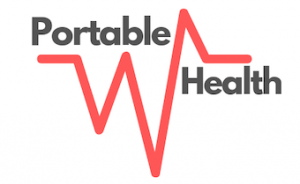Do you ever feel like all you do is sit?
You sit in the car on your commute.
You sit at your desk at work.
You sit and watch your kids play sports.
You sit and watch TV.
Sit, sit, sit.
Let’s face it, we do a lot of sitting these days. More than 80 percent of jobs today are desk jobs, a dramatic increase from just fifty years ago.
Did you know that the average office worker sits for about 5 to 6 hours per day? Sitting has a cumulative effect on your health—and it’s not a good effect either! Sitting contributes to obesity, back problems and a whole host of other health issues. Many health care professionals are calling sitting “the new smoking”.
A growing body of research links long periods of sitting with metabolic syndrome and obesity, high blood pressure, excess belly fat, high cholesterol and high blood sugar.
What can you do? Get moving!
Stand Up For Your Health
Many employers are encouraging standing at a desk rather than sitting. Companies are installing standing desks to help. Standing while you work on your computer or talk on the phone has some distinct advantages.
Standing desks adjust up and down so you can alternate from sitting to standing.
These desks are already ergonomically designed for comfort, and some are programmable to allow height adjustment. Just be sure you make all the proper adjustments to your workstation when you’re standing. Your desk needs to be at the correct height, and you need to be at least 20 inches away (about an arm’s length) from your monitor. Make sure you have proper posture, too—your head, neck, body and legs need to be in line with each other. Be sure to wear supportive shoes and shift your weight from one foot to the other foot as you stand.
Why Standing Trumps Sitting
Calories
People burn far fewer calories sitting all day. Couple that with lots of snacks at your desk, and it’s a recipe for disaster. Obesity has already reached global epidemic proportions, and sitting all day is a definite contributing factor. Did you know that standing instead of sitting burns 170 more calories? That adds up to 1000 extra burned calories per week, so it is definitely worth it.
Diabetes
Obesity and diabetes are inextricably linked. If you eat a big breakfast right before you rush out of your door, or eat a big lunch and then return to your desk and just sit, your blood sugar levels spike. Standing versus sitting after a meal can really decrease that spike. When your body regulates blood sugar more evenly, you are less likely to develop diabetes.
Heart Health
Our bodies were made for standing, not sitting. Your heart pumps your blood more efficiently in an upright position, so you’ll have much better heart health if you decrease your sitting time.
Back Pain
When you sit for long periods of time, your muscles become stiff and your back aches. Your spine is much more suited to a standing position, so when you stand, you’re much more likely to keep everything in alignment compared to sitting. When you sit, your shoulders pull forward and create added stress on your neck (cervical region). As your head tilts forward every inch, an extra 10 pounds of pressure on your neck vertebrae. No wonder your neck is sore at the end of the day.
Now that you know the detriments to sitting, here are some easy ways you can keep it moving at the office.
Get Comfy
Something as simple as wearing comfortable shoes and clothes means you’ll move more. Numerous studies – like this one – that tracked workers’ sitting patterns after moving to an activity-based office, have shown it.
Moving Meetings
Like with other important things in your life, you have to schedule time in for them. The same goes for taking breaks to move. Schedule them. Some people set a phone alarm, and there are several apps you can use too. If you need to make a phone call, consider making that call while walking around the block instead of staying at your desk. Need to chat with a colleague? Go for a walk together, or instead of sending an email, walk down to their office. Some people even hold standing meetings—no sitting allowed.
Track Your Movement
People always improve when they can see results, so track your steps throughout the day and your calories burned. There are smartphone apps and fitness watches that can help you accomplish this.
Stretch
If you’ve ever been to a baseball game, you know about the seventh inning stretch. Incorporate the same concept into your office day. Set a timer if you must. There are some great 15 minute exercises you can do to get the blood flowing. Just Google or look on YouTube.
Walk to Work
Not everyone can pull this one off, but if you live close enough, consider walking or biking to work. If you drive, pick a parking place really far away to force yourself to get some walking in.
Spread The Joy
We’re used to having everything within arm’s reach on our desks. Instead, spread things out. Move your phone across the room. This will force you to get up and move throughout the day. This is a minor consideration, and may not be practical for your office setup, but if you can, implement this tip. It may not seem like much, but any movement will help.
Take Care When Standing
If you do decide to stand for the majority of the day, implement some helpful tips. You may want to buy a cushioned mat to stand on to help absorb some of the force. You also may not want to stand in high heels all day. Wear comfortable, supportive shoes. If you develop leg pain or that pins and needles feeling, try to elevate one foot and see if that helps. Also try to move more while you are standing—shake out your limbs to become more limber, and do shoulder rolls or other stretches to pump the blood flow in your legs. Take a quick jaunt down the hall to the water fountain just to move a bit.
Keep Moving
The current body of research says our default position should definitely not be a sitting one. Instead, find ways to stand, walk, and move throughout your day. Make it part of your normal routine. If you’re thinking you can sit all day, then do a strenuous workout to make up for it, think again. Unfortunately, it doesn’t work that way!
Sometimes it is difficult to change your routine, but start small and build on it. Pretty soon, these new healthy actions will be habits. Your body will thank you!



